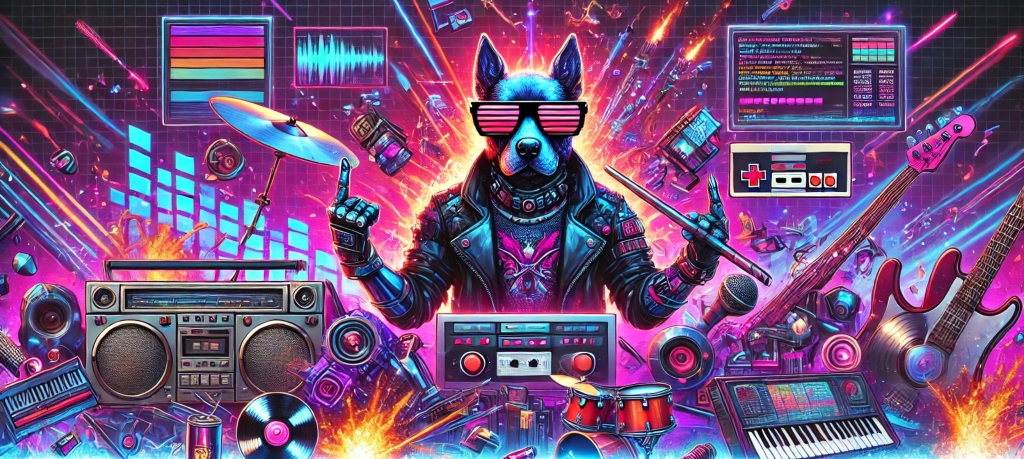Building a Wolf 3D-Style Engine in PlayBASIC with Affine-Textured Polygons
The idea behind this project was simple: Could I recreate a Wolfenstein 3D-style engine in PlayBASIC while maintaining good perspective but using affine texture-mapped polygons instead of traditional raycasting?
Floors and Ceilings: Subdivision for Perspective
Classic Wolfenstein 3D engines rely on raycasting, but I wanted to explore using polygons. This introduced two key challenges: rendering walls and handling floors/ceilings. I tackled floors first by subdividing floor tiles near the camera, ensuring that closer surfaces were represented with a denser set of polygons. This approach worked well, maintaining an accurate perspective without excessive computational overhead.
Walls: Adaptive Subdivision
I applied the same technique to walls, subdividing them based on their distance from the camera. Surfaces closer to the viewer were represented with more polygons, while those farther away used fewer. This adaptive approach preserved scene perspective while optimizing performance.
Ensuring Proper Polygon Order
A major challenge with polygon-based rendering is ensuring proper drawing order. Since walls, floors, and ceilings are drawn as independent polygons, z-fighting (incorrect layering of polygons) can be an issue. To address this, I implemented a two-pass rendering system:
- 1. First, floors and ceilings are drawn.
- 2. Then, walls are rendered on top.
This method prevents z-popping artifacts commonly seen in painters’ algorithms and produces a visually appealing scene.
Enhancing the Classic Wolf 3D Look: Adding Light Mapping
To push beyond the classic Wolfenstein 3D aesthetic, I added a light mapping pass. Implementing this in PlayBASIC required rendering the scene twice—essentially brute force—but the cost was only around a 20% performance hit. The visual improvement, however, was well worth it.
The process involved:
- 1. Drawing the texture-mapped scene.
- 2. Overlaying a Gouraud-shaded version of each triangle, where each pixel’s color was alpha-blended with the background.
This resulted in a real-time light-mapped scene with a Doom-like atmosphere, enhancing immersion and depth.
Pushing Further: 3D Polygonal Characters Instead of Sprites
A long-standing idea I wanted to explore was replacing traditional 2D sprites with 3D polygon-based characters. This concept originated from my work on a rendering engine called "Reality" for Amiga computers back in 1995, which aimed to integrate both sprites and 3D objects within a scene.
Implementing 3D Objects
To bring this concept into PlayBASIC’s Wolf 3D engine, I needed a way to load and render 3D models. I chose the DirectX ASCII format due to its simplicity. The loader extracted three key components:
Fortunately, I had already written a PlayBASIC loader for this format years ago. With minor modifications, I incorporated it into the project and built a simple object library for dynamic 3D models within the scene.
Sorting and Rendering 3D Objects
Rendering 3D models in a PlayBASIC-based engine required an efficient way to order polygons. Rather than manually sorting faces, I leveraged PlayBASIC’s built-in 2D camera system. Each face was assigned an average depth value (Z-depth), and the engine used the camera’s sorting system to manage rendering order. This approach avoided the need for a costly manual sort, maintaining decent perspective despite the lack of true z-buffering.
The final result was impressive: a Wolfenstein 3D-inspired environment with fully textured, light-mapped walls and floors—now featuring real 3D characters and objects.
Future Optimizations: Reducing Overdraw with a Portal System
One of the biggest challenges in 3D rendering is overdraw—when objects outside the visible scene are still processed and rendered. While the engine is fast enough to handle this, unnecessary rendering wastes performance.
To optimize, I am experimenting with a portal-based rendering system. This system:
This technique should significantly improve rendering efficiency without sacrificing visual fidelity. However, that’s a topic for a future update!
Get the PlayBASIC Source Code
You can download the full PlayBASIC source code for this project from our forums. Stay tuned for more updates as I refine the engine and explore new rendering techniques!



